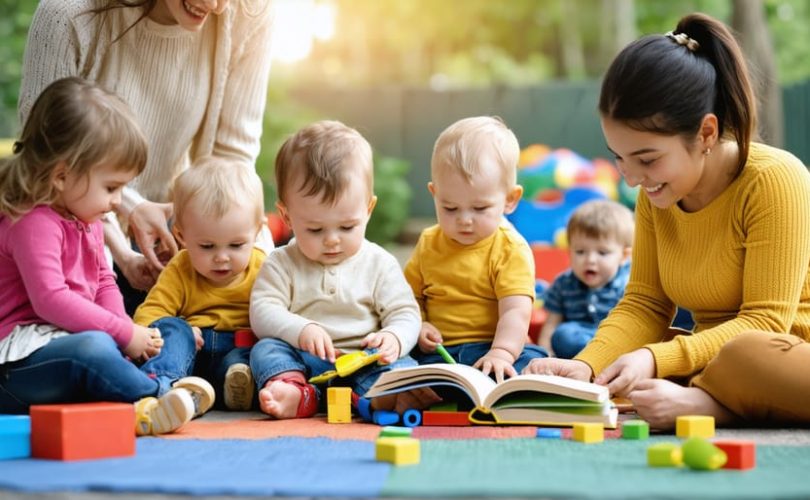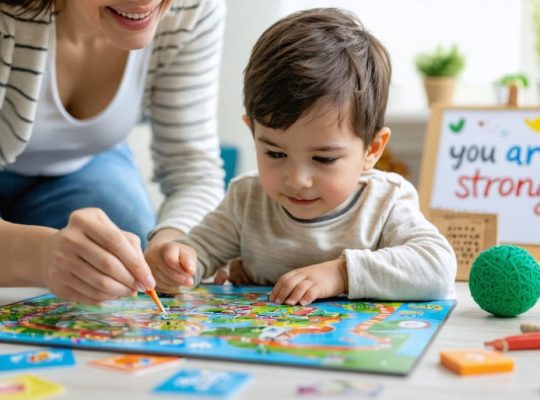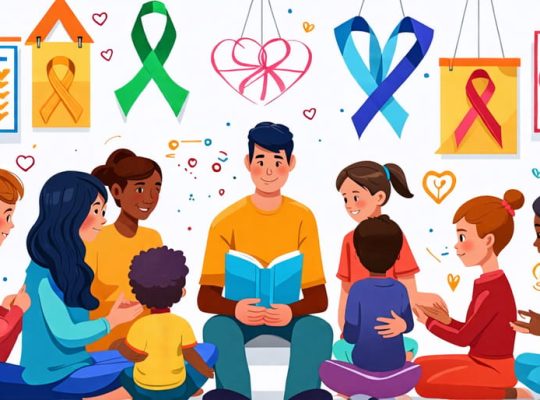Every child’s mental health journey begins in their earliest years, shaping not just their emotional well-being but their entire future. Recent research reveals that up to 20% of preschool-aged children experience mental health challenges, yet many go unrecognized during these crucial developmental stages.
As parents and educators, we hold the key to nurturing resilient minds during these formative years. The foundations of mental health – from emotional regulation to social connections – are built alongside first steps and first words, making early intervention not just beneficial, but essential.
Understanding children’s mental health requires looking beyond typical behavioral challenges to recognize the deeper emotional needs driving them. Whether it’s anxiety manifesting as separation issues, depression showing up as irritability, or trauma expressing itself through withdrawal, these early signs deserve our careful attention and response.
This critical window of opportunity in early childhood offers us the chance to shape positive mental health outcomes that can last a lifetime. By combining nurturing relationships, structured support, and professional guidance when needed, we can help our youngest members develop the emotional tools they’ll need to thrive.
Our role isn’t just to respond to mental health challenges – it’s to actively build the emotional foundations that will support children through life’s journey.
Understanding Mental Health in Young Children
Signs of Healthy Emotional Development
Recognizing signs of positive mental health in young children helps parents and caregivers ensure they’re on track for healthy emotional development. Watch for children who show curiosity about their surroundings and eagerly engage in play with others. Emotionally healthy children typically express a range of feelings appropriately and can bounce back from minor setbacks with support.
Look for kids who form secure attachments with caregivers, showing comfort in seeking help when needed while also displaying age-appropriate independence. They should demonstrate basic empathy, like offering a toy to a crying friend or showing concern when others are upset.
Healthy social interactions, such as taking turns during play and sharing toys, are important indicators. You’ll notice these children can generally calm themselves after becoming upset and maintain a relatively stable mood throughout the day.
Remember that every child develops at their own pace, and these signs may appear differently in different children. What matters most is consistent progress in emotional growth and social connections.
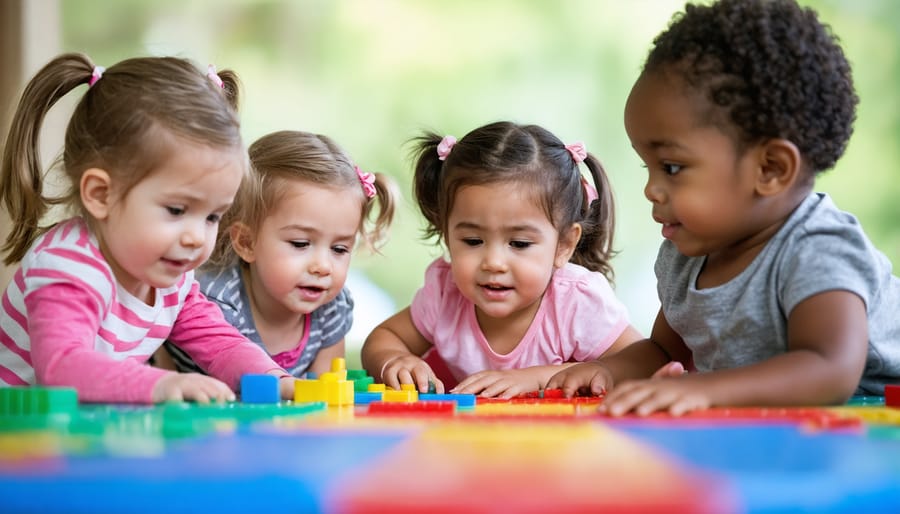
Common Mental Health Challenges
Young children commonly experience various emotional and behavioral concerns as they develop and learn to navigate their world. Separation anxiety is particularly common, where children become distressed when separated from their primary caregivers. This usually peaks between 18 months and 3 years old.
Temper tantrums and difficulty managing emotions are also typical challenges during early childhood. While these outbursts can be overwhelming for both children and caregivers, they’re often a normal part of emotional development as children learn to express their feelings and needs.
Some children may struggle with social anxiety or excessive shyness, making it difficult for them to participate in group activities or make friends. Others might experience sleep-related issues, including nightmares, bedtime resistance, or difficulty staying asleep.
Attention difficulties and hyperactivity can emerge during these early years, though it’s important to remember that young children naturally have shorter attention spans and high energy levels. Changes in routine, family dynamics, or environment can also trigger temporary behavioral changes or emotional responses.
Remember, every child develops at their own pace, and many of these challenges are temporary phases that improve with patience, understanding, and appropriate support.
Creating a Supportive Environment
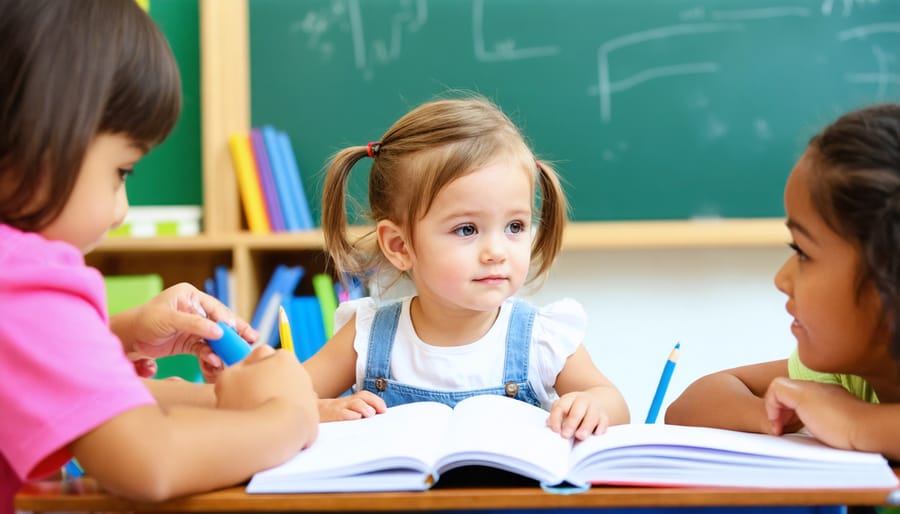
Building Emotional Safety
Creating an emotionally safe environment is crucial for a child’s mental well-being and development. When children feel secure and valued, they’re more likely to explore, learn, and develop healthy relationships with others. Think of emotional safety as an invisible protective bubble that allows children to express themselves freely without fear of judgment or rejection.
To build emotional safety, consistently respond to children’s needs with warmth and understanding. When a child is upset, acknowledge their feelings before trying to solve the problem. Simple phrases like “I see you’re feeling sad” or “It’s okay to feel angry” help children recognize and validate their emotions.
Establish predictable routines and clear boundaries, as these provide children with a sense of security and control over their environment. When children know what to expect, they feel more confident and less anxious about their daily experiences.
Create opportunities for positive interactions by engaging in one-on-one activities, active listening, and showing genuine interest in their thoughts and feelings. Remember to celebrate their efforts and achievements, no matter how small, as this builds self-esteem and encourages them to take positive risks.
Dr. Sarah Thompson, a child psychologist, notes: “Emotional safety isn’t just about comfort—it’s about creating an environment where children feel confident enough to make mistakes, express their feelings, and learn from their experiences.”
Physical spaces should also reflect emotional safety. Design quiet corners where children can retreat when feeling overwhelmed, and ensure the environment is organized and welcoming. Display children’s artwork and photos, helping them feel valued and connected to their space.
Promoting Social Connections
Social connections play a vital role in shaping a child’s mental well-being and emotional development. When children engage with peers, they learn essential life skills like sharing, empathy, and conflict resolution. As Maria Chen, a child development specialist, notes, “Every positive social interaction becomes a building block for future relationships and emotional resilience.”
Creating opportunities for social interaction starts at home. Parents can arrange playdates, join parent-child groups, or participate in community activities where children can meet and interact with peers. During these interactions, it’s important to observe without hovering, allowing children to navigate social situations while providing gentle guidance when needed.
In educational settings, teachers can facilitate social connections through structured group activities and free play. Simple activities like circle time, collaborative art projects, or dramatic play areas help children develop their social skills naturally. “We see remarkable growth in children’s confidence and communication abilities when they’re given regular opportunities to interact with peers,” shares preschool teacher James Martinez.
For children who struggle with social interactions, a step-by-step approach can be helpful. Start with one-on-one playdates in familiar settings before gradually moving to larger group situations. Practice basic social skills at home through role-play, and celebrate small victories when children make positive social connections.
Remember that every child develops social skills at their own pace. Some may be naturally outgoing, while others need more time and support to feel comfortable in social situations. The key is to create a supportive environment where children feel safe to explore relationships and learn from their social experiences.
Early Intervention and Support
When to Seek Professional Help
While all children experience ups and downs, certain signs may indicate a need for professional support. Trust your parental instinct – if you’re consistently worried about your child’s emotional or behavioral well-being, it’s worth consulting an expert.
Watch for significant changes in your child’s usual behavior, such as persistent sadness lasting more than two weeks, unusual aggression, or withdrawal from activities they once enjoyed. If your child regularly struggles with sleep, shows extreme separation anxiety, or has difficulty making friends, these could be signs that professional guidance would be beneficial.
Pay attention if your child’s behaviors are interfering with daily activities, family life, or their ability to learn and play. Physical symptoms like frequent headaches or stomachaches with no medical cause might also signal emotional distress.
Other warning signs include:
– Intense, frequent tantrums beyond typical age expectations
– Excessive fears or worries
– Difficulty concentrating or sitting still
– Recurring aggressive behavior toward themselves or others
– Significant changes in eating habits
– Frequent nightmares or sleep problems
Remember, seeking help early can prevent challenges from becoming more serious. Your child’s pediatrician can be a great first point of contact, as they can assess the situation and refer you to appropriate mental health professionals if needed. Many schools also have counselors or psychologists who can provide valuable support and guidance.
Early intervention often leads to better outcomes, so don’t hesitate to reach out for professional help if you have concerns.
Available Resources and Services
When it comes to supporting your child’s mental health, numerous resources and professional support services are available. Your child’s pediatrician is often the first point of contact, offering initial assessments and referrals to specialists when needed. Early intervention programs, available through local health departments and schools, provide screening and support for children showing signs of developmental or emotional challenges.
Many communities offer parent support groups where you can connect with other families facing similar situations, share experiences, and learn helpful strategies. School counselors and mental health professionals specializing in early childhood can provide valuable guidance and therapeutic interventions tailored to young children’s needs.
Local libraries and community centers frequently host workshops and educational programs focused on child development and emotional wellness. These programs often include play therapy sessions, art therapy, and social skills groups designed specifically for young children.
Online resources, including reputable mental health organizations, offer educational materials, screening tools, and crisis support services. Many health insurance plans now cover mental health services for children, making professional help more accessible. Remember, seeking support early can make a significant difference in your child’s emotional well-being and development.
For families facing financial constraints, sliding-scale services and community health centers provide affordable mental health care options. Your child’s school district may also offer free or low-cost mental health resources through their early childhood programs.
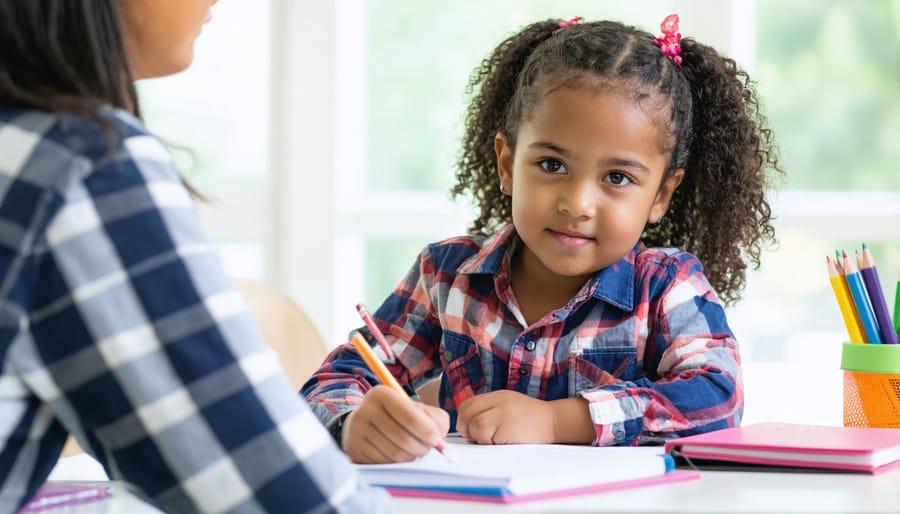
Partnership Between Educators and Families
Communication Strategies
Opening conversations about mental health with families requires sensitivity, patience, and understanding. Start by creating a safe, judgment-free environment where parents feel comfortable sharing their concerns. Choose a private setting and schedule adequate time for meaningful dialogue.
When discussing a child’s mental health, focus on specific observations rather than making assumptions. For example, instead of saying “Your child seems anxious,” try “I’ve noticed Sarah appears hesitant to join group activities, and I wanted to check if you’ve observed similar behaviors at home.”
Use strengths-based language that emphasizes the child’s positive qualities while addressing concerns. Frame the conversation around supporting the child’s overall well-being rather than fixing problems. Remember to listen actively and validate parents’ feelings – they know their child best.
Share resources and information gradually, avoiding overwhelming families with too much information at once. Provide concrete examples of strategies that can be implemented both at home and in educational settings. Maintain regular communication through various channels, such as brief check-ins, progress notes, or scheduled meetings, depending on the family’s preferences.
If professional help might be beneficial, suggest it gently and provide specific referrals. Emphasize that seeking support is a sign of strength and that early intervention can make a significant difference in a child’s development. Always follow up after these conversations to show continued support and maintain trust.
Creating Consistent Support Systems
Children thrive when they experience consistent support across all their environments. Creating harmony between home and school settings is crucial to help foster mental health resilience in young children.
Regular communication between parents and educators forms the foundation of this alignment. Consider establishing weekly check-ins, sharing journals, or using communication apps to discuss the child’s emotional experiences, challenges, and victories. This ongoing dialogue helps both parties understand and respond to the child’s needs consistently.
Create similar routines and expectations in both settings. For example, if a child uses breathing exercises at school to manage big emotions, parents can practice these same techniques at home. This consistency helps children feel secure and confident in their coping strategies, regardless of where they are.
Use common language and approaches to emotional support. When teachers and parents adopt similar vocabularies for discussing feelings and consistent methods for handling challenges, children can better understand and express their emotions. Simple phrases like “I need a calm moment” or “let’s take three deep breaths” can become familiar tools that work effectively in both environments.
Remember that alignment doesn’t mean rigidity. Both settings should maintain flexibility while working together to create a supportive emotional environment that adapts to the child’s changing needs.
Supporting children’s mental health in their early years is not just an investment in their present well-being, but a foundation for their lifelong emotional resilience and social success. As we’ve explored throughout this article, early childhood presents a crucial window of opportunity where caregivers, educators, and healthcare providers can make a lasting positive impact on children’s mental health development.
Remember that every child’s journey is unique, and there is no one-size-fits-all approach to mental health support. By staying attuned to children’s emotional needs, maintaining open communication, and creating nurturing environments, we can help them develop strong emotional intelligence and coping skills that will serve them throughout their lives.
Early intervention and prevention are key. Don’t wait for obvious signs of distress before taking action. Regular check-ins, age-appropriate emotional education, and consistent support can help identify and address potential challenges before they become more serious concerns.
As parents and caregivers, your role is invaluable. Trust your instincts, stay informed, and never hesitate to seek professional guidance when needed. Remember that taking care of your own mental health is equally important – children learn by example, and a mentally healthy caregiver is better equipped to support a child’s emotional needs.
Together, we can create a future where mental health support in early childhood is as natural and normalized as physical health care, ensuring every child has the opportunity to thrive emotionally and socially.

